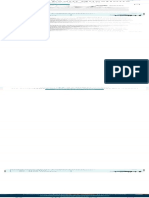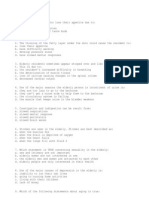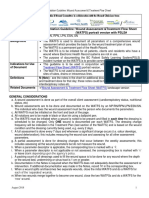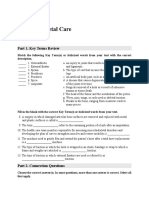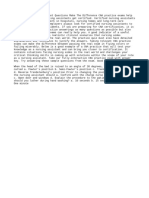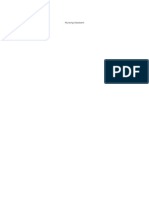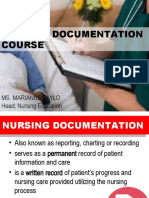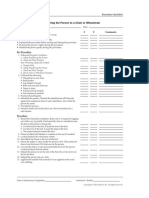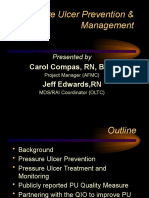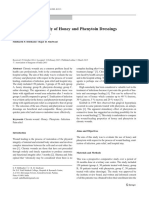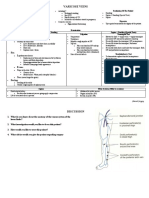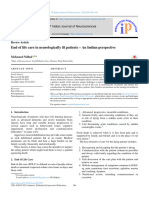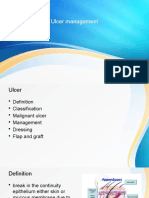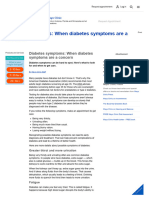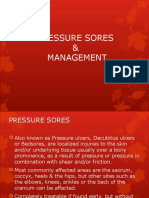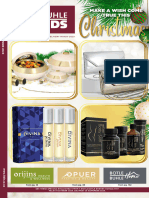100% found this document useful (2 votes)
552 views13 pagesCNA Inservice
The document discusses pressure ulcers, including their causes, prevention, and stages. It aims to teach CNAs to identify the causes of pressure ulcers as reduced blood flow due to pressure on the skin, recognize at-risk areas, and implement prevention methods like repositioning patients every two hours and managing incontinence. It also defines the four stages of pressure ulcers from non-blanching redness in Stage 1 to damage of muscle and bone in Stage 4. A short quiz evaluates the learning objectives.
Uploaded by
GeorgeWazuCopyright
© Attribution Non-Commercial (BY-NC)
We take content rights seriously. If you suspect this is your content, claim it here.
Available Formats
Download as PPT, PDF, TXT or read online on Scribd
100% found this document useful (2 votes)
552 views13 pagesCNA Inservice
The document discusses pressure ulcers, including their causes, prevention, and stages. It aims to teach CNAs to identify the causes of pressure ulcers as reduced blood flow due to pressure on the skin, recognize at-risk areas, and implement prevention methods like repositioning patients every two hours and managing incontinence. It also defines the four stages of pressure ulcers from non-blanching redness in Stage 1 to damage of muscle and bone in Stage 4. A short quiz evaluates the learning objectives.
Uploaded by
GeorgeWazuCopyright
© Attribution Non-Commercial (BY-NC)
We take content rights seriously. If you suspect this is your content, claim it here.
Available Formats
Download as PPT, PDF, TXT or read online on Scribd
/ 13



